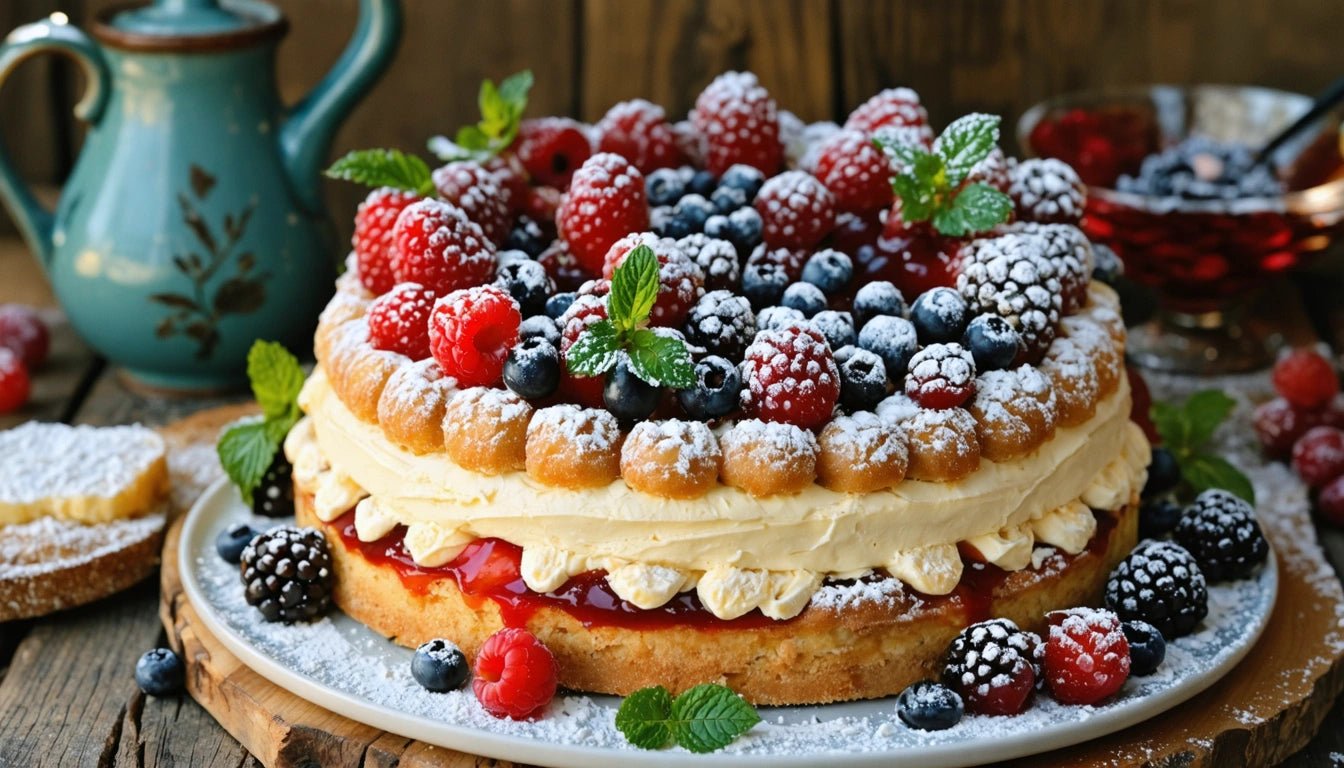Table of Contents
Understanding Torte: A Guide to This Classic Dessert
The world of desserts is vast and varied, with each culture contributing its own sweet specialties to the global culinary landscape. Among these delicacies, the torte stands out as a sophisticated and rich dessert with European roots. But what is a torte exactly, and how does it differ from other baked goods? This comprehensive guide explores the definition, history, varieties, and techniques behind this beloved confection.
What is a Torte: Defining the Classic Dessert
A torte is a rich, usually multilayered cake that typically incorporates little to no flour, relying instead on ground nuts or breadcrumbs for structure. The word "torte" comes from the German word "torte" and the Italian word "torta," both meaning cake. However, what is a torte dessert specifically is something more refined than an ordinary cake.
Tortes are characterized by their dense texture, complex flavors, and often elaborate decoration. They're traditionally made with several thin layers filled with buttercreams, mousses, jams, or fruits. The result is a dessert that's simultaneously rich and light, complex yet harmonious in flavor.
Torte vs. Cake: Key Differences Explained
While many people use the terms interchangeably, there are distinct differences between tortes and cakes:
- Flour content: Traditional cakes rely heavily on flour for structure, while tortes use minimal flour or substitute it with ground nuts or breadcrumbs.
- Height and layers: Tortes are typically shorter and denser than cakes but often feature multiple thin layers.
- Texture: Tortes have a denser, sometimes almost creamy texture compared to the lighter, spongier texture of cakes.
- Richness: Tortes tend to be richer and more decadent, often incorporating butter, chocolate, and nuts in greater proportions.
- Decoration: Tortes frequently feature more elaborate decoration, with glazes, ganaches, or fruit toppings rather than the frosting typical of cakes.
Understanding what torte means in baking context helps appreciate the craftsmanship that goes into creating these special desserts.
Popular Torte Varieties Around the World
Austrian and German Tortes
The Sachertorte, perhaps the most famous torte in the world, originated in Vienna, Austria. This chocolate torte features apricot jam filling and a glossy chocolate glaze. The Linzer Torte, considered one of the oldest known cake recipes, features a lattice design over raspberry jam.
Hungarian Tortes
The Dobos Torte features thin layers of sponge cake separated by chocolate buttercream and topped with caramel. The Esterhazy Torte consists of almond meringue layers filled with buttercream.
Italian Tortes
Italian crostatas and tortas often feature fruit fillings and nut-based crusts, similar to the concept of tortes in other European countries.
Just as specialty packaging protects delicate products like pre-rolled cones in protective blister packaging, the various layers and components of tortes are carefully constructed to preserve their distinct textures and flavors.
Making a Torte: Essential Ingredients and Techniques
Creating a successful torte requires attention to detail and quality ingredients:
Key Ingredients
- Nuts: Almonds, hazelnuts, or walnuts are commonly ground to replace some or all of the flour.
- Eggs: Separated eggs with whipped whites provide structure and lightness.
- Chocolate: High-quality chocolate is essential for many torte varieties.
- Butter: Creates richness and helps achieve the characteristic dense texture.
- Sweeteners: Sugar, honey, or fruit preserves add sweetness and moisture.
Essential Techniques
Tortes require several specialized techniques:
- Proper folding of ingredients to maintain air incorporated during mixing
- Careful layering of fillings between thin cake layers
- Precise temperature control during baking
- Proper cooling and setting time before serving
Much like how glassine materials require careful handling for optimal results, tortes demand precision and patience throughout the preparation process.
Serving and Storage Recommendations for Tortes
Tortes are typically served in small slices due to their richness. They pair wonderfully with coffee, tea, or dessert wines. For the best flavor experience:
- Allow refrigerated tortes to come to room temperature before serving (about 30 minutes)
- Use a sharp, thin knife dipped in hot water between cuts for clean slices
- Serve on chilled plates to prevent melting of buttercream or mousse components
For storage, most tortes keep well refrigerated for 3-5 days. Some varieties, particularly those with nut bases like those discussed in DIY guides for other products, can also be frozen for longer storage.
Torte Evolution: Modern Interpretations and Future Trends
While traditional tortes maintain their beloved status, pastry chefs continue to innovate with this classic form:
- Dietary adaptations: Gluten-free tortes (which were naturally gluten-free before it became trendy) are gaining popularity, as are vegan versions using plant-based alternatives.
- Fusion flavors: Contemporary tortes often incorporate global flavors like matcha, cardamom, or tropical fruits.
- Miniaturization: Individual-sized tortes allow for more elaborate presentation and portion control.
- Deconstructed presentations: Some chefs present torte elements separately for interactive dining experiences.
The art of torte-making continues to evolve while honoring the rich traditions that make these desserts special. Much like how terminology evolves in different industries, the definition of what constitutes a torte expands while maintaining core principles that define this classic dessert.
Whether you're a professional pastry chef or an ambitious home baker, understanding what is a torte dessert opens the door to creating sophisticated, memorable sweet experiences that connect us to centuries of culinary tradition.



















